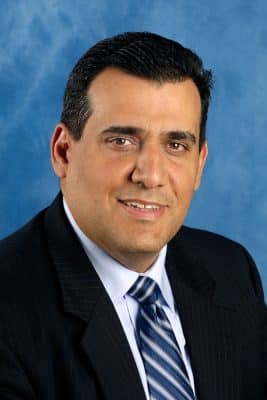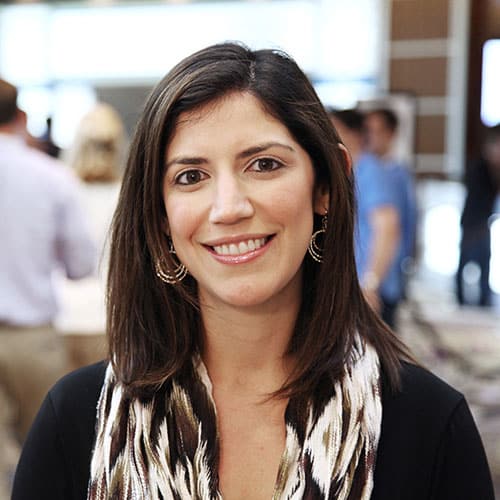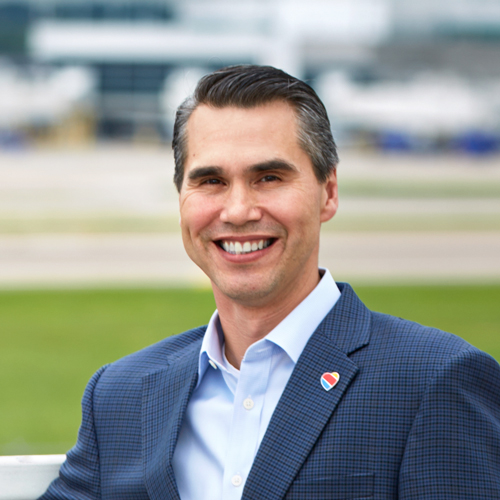
Miami Children’s Health System has come a long way since it was founded in 1950 as the Nicklaus Children’s Hospital. Today, MCHS is not only South Florida’s only licensed specialty hospital exclusively for children, it has expanded to include numerous facilities throughout the region, providing more than 650 attending physicians and more than 130 sub-specialists.
What may be even more remarkable, however, are the technology innovations the system has developed. As other healthcare institutions struggle with countless changes to clinical and business practices, MCHS has used those challenges as the motivation to develop tools to improve care, administrative management, finances, and patient satisfaction.
Edward Martinez, senior vice president and chief information officer for MCHS, has spearheaded several tech and innovation initiatives, resulting in a number of advanced tools and products to enhance patient engagement, improve communications, reduce errors, and increase focus on patient needs. Having recently added an MBA in health-sector management and policy to his list of achievements, he notes that “the transition to accountable care and responding to patient demand have prompted us to rethink how we provide care—primarily through innovations that allow us to have more control over what happens within our facilities.”
INNOVATING WITH MATURING TECHNOLOGIES
In keeping with MCHS’s history of developing and embracing advanced technology, four years ago, Martinez was developing applications based on new mobile capabilities along with solutions and services delivered via telemedicine. One of these projects evolved into MCHS’s first commercially released product: Humpty-Dumpty, a questionnaire and algorithm that identify patients at high risk for falling. It was so successful that interest was generated nationally from other hospitals, and MCHS began selling the program. The product is now licensed for use by Cerner, the world’s largest electronic medical record vendor.
Martinez, his IT team, and numerous MCHS clinical and business teams have since launched a dizzying array of successful technology products. Nesa INSIGHT, for example, is a software suite that will be commercially deployed at the end of this year and consists of various integrated clinical and management tools. Through chips embedded in staff ID badges, patient ID bracelets, and hospital equipment, near-field tracking technologies will improve workflow.
Nesa Solutions’ INSIGHT for Miami Children’s’ Healthcare System
Managing Care Delivery
If a patient has been waiting too long in a busy department, the system alerts staff of his or her location to within three inches, compared to current systems, which are accurate only to within fifteen feet.
Improving EMR Accuracy
Automatic updates track physicians and care providers that come in contact with a patient. Staff laptops and tablets can also automatically switch records to the patient being cared for, to enable more immediate and more accurate interactions.
Detecting Patient Falls
Accelerometers can sense sudden movement and immediately direct caregivers to the patient.
Preventing Child Abductions
Sensors can trigger locked doors and issue alerts of unapproved movements of children.
Monitoring Hand Washing
Sensors in cleanser dispensers identify staff entering patients’ rooms. A color-coded screen (triggered by the dispenser button) indicates whether they wash or not. That information is tracked to monitor compliance and reinforce the desired behavior.
The NESA INSIGHT infrastructure and care-support components are all integrated with MCHS’s billing and financial systems. This allows clinical activities and treatments to be automatically entered into patients’ records, resulting in more accurate billing and reimbursements. These processes have helped keep costs steady against an increasing revenue stream. In fact, MCHS’s operating margin is currently fifty percent higher than the national average.
Clinical activities have also benefited from leaps in technology capabilities. Through its telemedicine programs, MCHS physicians have treated patients from as far way as Ukraine and on ships at sea. Capabilities have advanced to the point that diagnoses can be made based on the sound of a patient’s heartbeat or breathing from anywhere in the world. In one instance, clear visual images helped determine that a patient on a cruise ship had a treatable ear infection, rather than a more serious condition.
Mobile smartphone innovations are also helping patients. By using HEALTHGRID, MCHS’s commercial cloud-based product for patient access and engagement, parents can get automated, real-time notifications of treatments. For example, instead of having to wait in their child’s room for updates, texts can tell parents the status of a procedure and an estimated time for when the child will return. Parents can also receive doctor’s notes for school through the app. Adult patients and parents can get digital discharge instructions on their phones, eliminating the traditional, often confusing stack of papers at discharge.
Martinez indicates that patients and parents are benefiting from features like video discharge instructions for easy reference. Such interactive features help increase engagement with treatment and even help monitor after-care compliance, by tracking whether instructions were opened after leaving the hospital.
“The transition to accountable care and responding to patient demand have prompted us to rethink how we provide care—primarily through innovations that allow us to have more control over what happens within our facilities.”
On the clinical side, healthcare professionals can use HEALTHGRID’s care narrative module to dictate detailed care instructions to colleagues about patients who might need special attention across shift changes. This new handoff process promises to reduce errors in transmitting instructions “on the fly,” and is likely to improve patient outcomes.
“These are all tools to help make us more accountable, more responsible and to give patients more meaningful information, so they can be more involved in the care process,” Martinez says. “By leveraging capabilities like e-signatures and sending prescriptions to phones, we’re changing the way medicine has been practiced for the last 100 years.”
MORE PROGRESS TO COME
Martinez and his team continue to develop other projects, such as the Latin Genome Project, practical uses for drones in coordination with emergency services, and NUKLEUS, a predictive algorithm that aggregates medical data to recognize the likelihood of catastrophic patient “crashes” up to seven hours in advance. Telemedicine advanced home diagnostic kits will also soon be available at local pharmacies.
Even with these kinds of advances delivering so many improvements to patients’ experiences, Martinez says, “this is just the beginning of the solutions we’ve been able to implement to meet consumer demand and improve outcomes. You won’t believe what the next decade will bring.”

